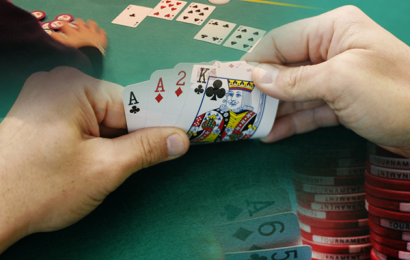Well, there are multiple options available when you start using login SBOBET. You need to ensure you pick a game that you will enjoy. With this, you can have a great gambling experience while you earn some money as well. Isn’t it already so thrilling?
Beating Blackjack Simple Count
The overall game of casino blackjack could be beaten using a simple plus minus count. Casinos have known this for 50 years since Edward O. Thorp authored a magazine known as Beat the dealership. But the overall game continues to be offered because insufficient gamers take time to learn to play the blackjack perfectly.
Some gamers place the time into learning fundamental technique for blackjack, and they could play almost despite the home. However, to win regularly takes a bit more work and exercise.
The Count
The foundation for card counting would be that the house edge changes as cards are taken off a pack of cards. Sometimes the advantage is really within the players’ favor. But, the gamer will be in a problem with the home, even when they play perfect fundamental strategy and count cards, when they never vary their wager. To make the most of their edge, the gamer must wager more income in the proper time.

To keep an eye on when that proper time may be, an easy plus minus count can be used. The gamer uses fundamental strategy, but additionally looks after a running total within their mind from the “count”. Like a player sees cards for action, they assign the next amounts and a running count. With a brand new deck or perhaps a new shoe, the count will invariably begin at zero. Remember, should you forget your count, just wager just one unit, create guess. If you will find lots of tables around and you’re simply playing footwear, you could proceed to another table.
2, 3, 4, 5, 6 – all these cards counts as plus 1
Bullets and ten cards (hundreds, jacks, queens and nobleman) count as minus 1
7, 8, 9 count as zero – just ignore them
For instance, around the top notch, them up for grabs really are a ten, a 5, a 6, an 8, as well as an ace. You count minus 1 for that ten, to despite 5, plus 1 using the six, the eight is zero – so neglected, and to despite the ace. Your running count has returned to zero. As new cards are revealed you continue the count. Whenever the count is really a minus number or zero, create a wager of 1 unit.
Once the count is positive, wager several unit. By betting more if you have the advantage, and fewer whenever you don’t, you are able to really beat the casino at blackjack! Obviously you need to practice the count before you decide to ever play legitimate money!
Practice The Count
Around the top notch of merely one deck you wager one unit and wait. This is actually the run of cards: 6, 4, 2 ace, ten, five, four, six, 9, 8. Your count ought to be: one, two, three, two, one, two, three, four, four, four (disregard the 7, 8, 9 – they’re zero). Now the possibilities to your benefit, wager 2 or 3 models.
Next hands the brand new cards seen are: ten, 8, 2, ace, ten, 4, ten, ten, 9, ten, 3. Your count should begin with four and go three, three, four, three, four, three, two, two, three. The count continues to be three which means you should wager 2 or 3 models again.
In one deck game you’ll most likely get just another hands. Your projects is performed and also you reached wager more whenever you had the advantage. Whenever the count is negative or perhaps, wager one unit. If you’re using footwear game using more than one deck, you will have to convert your running count to some true count prior to making the next wager.
True Count Conversion
Having a shoe, the amount of cards still for use should be considered to your wager. You’ll still only wager one unit with any negative or zero count, but when when is positive (a variety of 1 or greater), you have to consider the discard rack and guess the number of decks happen to be used, and just how many stay in the shoe. Having a six-deck shoe, you’ll divide your running count by 6 at the start. In case your running count is 12, your true count is 12/6 = 2. If four decks remain, divide 12/4 = 3. If two decks remain, you divide your running count through the two remaining decks: 12/2 = 6.
Yes, you need to keep your running count inside your mind – and divide the rest of the decks with that running count before each wager. It requires some work. The payback is the fact that with respect to the positive running count, you are aware how much to wager so when to consider insurance.
Insurance
Taking insurance coverage is a poor wager when the count is negative, but when the real count is plus 2 or greater, insurance is a great wager. Go!
Just How Much to Wager
Regrettably, casinos tend not to let card counters play. It’s perfectly legal to apply your brain to wager the home, however they have the authority to bar you against playing in Nevada (although not in Atlantic City along with a couple of other areas). The secret would be to ‘t be observed. But you need to vary your bets to create anything – so walk the tightrope!

Once the count is positive, you have to wager several unit. An easy to keep in mind product is to wager one unit to begin, and give a single unit for every 1/2 true count advantage:
- True Count = 1 Wager 1 unit
- True Count = 1.5 Wager 2 models
- True Count = 2 Wager 3 models
- True Count = 2.5 Wager 4 models
- True Count = 3 Wager 5 models
- True Count = 3.5 Wager 6 models
- True Count = 4 Wager 7 models
- True Count = 4.5 Wager 8 Models
- True Count = 5 Wager 9 Models
- True Count = 5.5 or even more you need to wager 10 models
Do Not Get Barred
Now pit bosses are educated to catch counters, as well as their primary tip-off is gamers who rarely take insurance (with the exception of positive counts) and who vary their bets. You need to seem like the typical player. When the count jumps all of a sudden, don’t jump your wager in one unit to 10 models. That’s prone to enable you to get barred. Learn some clever cover your player. Make use of a parlay when won by you and also the count increases. You might like to spread to 2 hands from time to time to increase your wager. Be wise and you may beat blackjack!




































![Dive into Digital Gold with the Best Bitcoin Casinos of [Current Year] Dive into Digital Gold with the Best Bitcoin Casinos of [Current Year]](https://soprtplast.com/wp-content/uploads/2024/03/Bitcoin-Casinos-1-230x184.jpg)
















